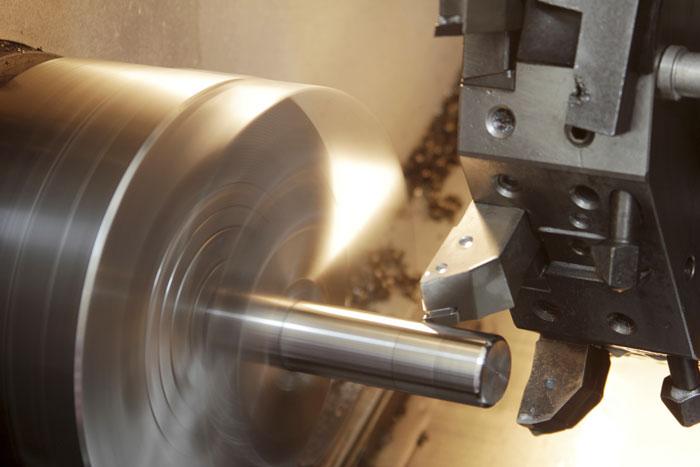- FMA
- The Fabricator
- FABTECH
- Canadian Metalworking
Turning to Diversification
Eastern Ontario machine shop expands into new industries as part of a sustained diversification plan
- March 17, 2014
- Article
- Metalworking
E.T.M. Industries, Renfrew, Ont., is a diverse shop.
It serves customers in the aerospace, military, space, nuclear, telecom, mining, and automotive sectors using the latest technology and a staff that is cross-trained on multiple machines.
Formed in 1977 by founder Edward Legree, the company now is owned jointly by President Jeff Campbell, General Manager John Robertson, and Vice President Jean Paul Leclerc.
In the late 1990s E.T.M. had a significant growth spurt because of expansion into the aerospace and telecommunications industries. Today the company employs 80 staff in two buildings at one location, housing approximately 80,000 square feet of manufacturing space.
It also is continuing on its path of growth by diversifying into many sectors.
CIM—Canadian Industrial Machinery asked GM John Robertson about the company’s success. Here is what he had to say.
CIM: Why run such a diverse operation?
Robertson: We tried to build a business that did not have all of its eggs in one basket. Even within sectors we are pretty diverse. For example, we do work for aerospace, space, and military customers, and not a lot of shops handle jobs from all three of those industries.
It also means that we constantly have jobs coming in and jobs going out.
If we are doing work for the mining sector, chances are our lathes are busy cutting steel, but for the aerospace sector, we cut a lot of aluminum and titanium.
A big change for us in the last few years is that we cut everything. I’d love to be able to cut just aluminum, but that’s not realistic.
Once you get tooled up with the right types of inserts and holders -- combined with the right mindset – you now can reliably cut stainless steel, titanium, aluminum, castings, and steel, whatever the customer needs.
CIM: How important is aerospace work to your shop?
Robertson: That sector is probably about 50 percent of our business. We are AS9100C-certified and also CGP- [Controlled Goods Program-] certified, which helps us attract a lot of work.
Our staff had to go through rigorous background checks for us to work with the big players of that industry.
CIM: What type of equipment do you use?
Robertson: We try to buy equipment that is at the leading edge to help keep us cost-competitive in the market. We have more than 40 machines, including die sinkers, lathes, and 5-axis machining centers. We typically buy only from a couple of sources too. Everything in the shop is either a Feeler or a Matsuura.
In the past we may have purchased equipment that could be dedicated to a few different product lines. Today we try to create workcells that are very flexible. This may mean buying a lathe with a larger throughhole, for example, but we can use it in a cell that can do more for us than a single part.
I and my partners realized we needed to adapt our machining theory to best serve our customers, and that meant creating these flexible workcells.
We also have multiple Feeler lathes that allow us to perform small turning tasks as well as large turning, and we also have lathes with live tooling and bar feeders. This helps with productivity and part quality because all of the operations can be done on one machine in one setup.
Anytime you take a part off the machine and move it, you can negatively affect quality. By producing a finished part in one setup, there also is a benefit to your cost per part.
By not having equipment that is simply dedicated to one product line, we can react faster to the needs of our customers.
CIM: What role does the QC department play at E.T.M.?
Robertson: Quality control is a necessity. If you don't have the correct quality procedures in place, you just won’t be doing work with the major industry players.
At E.T.M. we have two coordinate measuring machines [CMMs] that can handle parts up to 72 in.
CIM: What is the labor pool like in the Ottawa Valley?
Robertson: We have had great success in attracting staff. There are a lot of machinists and tradespeople in the area, but, over time, it’s getting tougher. Cross-training our staff is one way we deal with this problem.
We do both software and equipment training with the dealers when we buy equipment.
Our people are what make us successful, so we invest money in our equipment and our people. If you don’t spend money on training, you don’t get the execution, and you’re not getting the full value out of your equipment.
We also make sure to use our highly skilled workers on the precision work that demands a high level of skill.
CIM: What have you been able to accomplish with recent government funding?
Robertson: Recently we have been able to access government grant funding for some lean initiatives. We were able to increase productivity simply by removing inefficiencies and waste on the shop floor.
Even after the yearlong process, we kept the consultant on, using our own money just to help us keep reducing waste in our manufacturing process.
subscribe now


Keep up to date with the latest news, events, and technology for all things metal from our pair of monthly magazines written specifically for Canadian manufacturers!
Start Your Free Subscription- Trending Articles
- Industry Events
ZEISS Quality Innovation Days 2024
- April 15 - 19, 2024
Tube 2024
- April 15 - 19, 2024
- Düsseldorf, Germany
CTMA Economic Uncertainty: Helping You Navigate Windsor Seminar
- April 30, 2024
- Windsor, ON Canada
MME Winnipeg
- April 30, 2024
- Winnipeg, ON Canada
CTMA Economic Uncertainty: Helping You Navigate Kitchener Seminar
- May 2, 2024
- Kitchener, ON Canada















